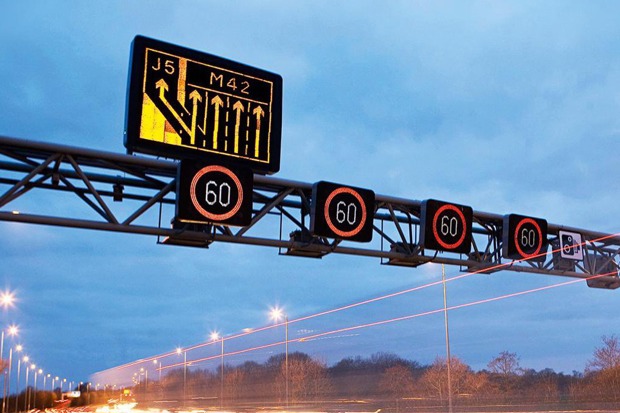Government puts smart motorway roll-out on hold

The Government has stopped the roll-out of all-lane running smart motorways, which do not have a permanent hard shoulder, until five years of safety data is available.
The move was recommended by the Transport Select Committee in its recent report, and also follows criticism from safety campaigners as a number of fatalities have occurred on smart motorways.
Existing stretches of smart motorway will be made safer with a £390 million investment to install more than 150 additional emergency areas so drivers have more places to stop if they get into difficulty.
The Government said that this will represent around a 50 per cent increase in places to stop by 2025.
National Highways (formerly Highways England) has already begun work to install extra refuge areas.

Transport Secretary Grant Shapps said: "While our initial data shows that smart motorways are among the safest roads in the UK, it’s crucial that we go further to ensure people feel safer using them.
"Pausing schemes yet to start construction and making multimillion-pound improvements to existing schemes will give drivers confidence and provide the data we need to inform our next steps.
"I want to thank safety campaigners, including those who have lost loved ones, for rightly striving for higher standards on our roads. I share their concerns."
After five years’ worth of safety data has been gathered for schemes introduced before 2020, the Government said that it will “assess the data and make an informed decision on next steps”.

Chair of the Transport Committee, Huw Merriman MP welcomed the Government's response to the Committee's report.
He said: “It was clear to our Committee that the public needs more reassurance that these motorways are safe to use.
"With conflicting and patchy evidence covering a limited number of years, more time was required to properly assess the impact on safety.
"By accepting our recommendation to pause the rollout of smart motorways, the Government will have the weight of evidence to assist planning for future road building design."
"This watershed decision is an unqualified victory for drivers." Nicholas Lyes, RAC head of roads policy
RAC head of roads policy Nicholas Lyes added: "This watershed decision is an unqualified victory for drivers, many of whom have deeply held concerns over the safety of motorways where the hard shoulder is permanently removed.
"Rather than ploughing on regardless in the face of mounting public opposition, we’re pleased the Government has finally hit the pause button and given itself time to fully consider the safety of these schemes, and the way our motorways are adapted to increase capacity from now on.
“We have long argued that dynamic hard shoulder and controlled motorway schemes – both of which feature a hard shoulder in some form – should be considered given their good safety record and it’s important these options are on the table.
"A further commitment to install an additional 150 refuge areas on existing schemes to bring them all up to the same standard is positive news and should go some way towards reassuring drivers worried about reaching one in an emergency."
What are the types of smart motorway?
There are three types of smart motorway:
- All-lane running: the hard shoulder is permanently converted into a live lane and there are emergency refuge areas at regular intervals.
- Dynamic hard shoulder: the hard shoulder is converted to a live lane at peak times of congestion.
- Controlled: a motorway with three or more lanes, a hard shoulder and variable speed limits
What is the point of smart motorways?
Smart motorways were introduced as a way of managing traffic and easing congestion, without having to widen roads.
How many fatalities have been on smart motorways?
A BBC Panorama investigation found 38 people had been killed on smart motorways during a five-year period (2014 to 2019).
Which motorways are smart motorways?
There are around 375 miles of smart motorways on sections of the M1, M3, M4, M5, M6, M20, M23, M25, M27, the M40/M42 interchange, M56 and M62.
Here is a map of the UK's smart motorway network, which is managed by National Highways (formerly Highways England).
Is a red cross over a smart motorway lane advisory or mandatory?

What should we do if we break down in the live lane of a Smart motorway?


